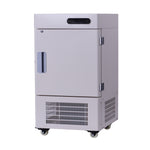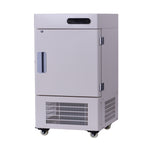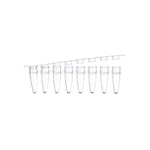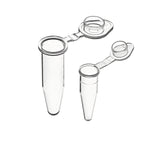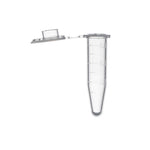You have no items in your shopping cart.

Centrifuge tubes are vessels that contain content that experts examine. They are used to keep liquids contained during centrifugation, which involves rapidly spinning a sample around a fixed axis to divide it into its constituents. Most processes make use of the tubes, and professionals make them match perfectly. All you need is to keep the centrifuge centered and stay put during rotation.
A centrifuge is a standard laboratory instrument. The centrifuge tubes should fit inside a centrifuge, a piece of laboratory apparatus that spins specimens at a very high speed to separate the components within the sample. From an economic and technical standpoint, centrifuges are among the best options for the structural separation of solids from liquids.
These items are necessary for all laboratories and can help with various experiments and projects. If you're in the process of buying a centrifuge or haven't used one previously, you must know what these tools are and how they operate. We'll cover all you require to understand about centrifuges here.
Biofargo’s centrifuges provide safe and dependable support for biotech, life sciences, pharmaceuticals, medical diagnostics, and laboratory experiments. Biofargo can help you find the best lab centrifuge tubes.
Various Features of Centrifuge Tubes
Most tubes have cylindrical bottoms that help gather any solid or denser test parts under centrifugation. These tubes should be in a position to endure the centrifugal force generated while in use, and their requirements may specify the top speed at which you utilize safely. Centrifuge tubes come in a variety of shapes, sizes, and materials.
Capacities: Vary in diameter from 0.1mL to about 100mL; the more popular ones are 15mL and 50mL and 1mL and 2mL.
Closures: Flat or plugged screw-on caps that can be connected or separated
Shape: it's either round-bottomed or conical; suppose it's conical, pick skirted free-standing options.
Material: Plastic resin or glass; plastic resins entail polypropylene, PET, polystyrene, and PPCO.
Sterility: you can use sterilized or non-sterilized; gas or heat sterilization.
Packaging: Racked or bulk tubes are the two options for packaging.
Centrifuge Tubes Applications
You require a centrifuge tube and a centrifuge for various laboratory procedures. Because of the sample nature, environmental laboratories use them frequently. The specimens they acquire are typically not clean water, but many chemicals contaminate them.
Samples of Soil
For soil testing, various extraction methods need to mix the soil with solvent or water. By thoroughly mixing the soil with water, the goal sample components from the soil can be released into the water and analyzed on a tool.
When you mix water and soil, the solution is frequently murky and contains too many large soil particles that are effectively analyzed. By spinning the specimen in a centrifuge tube, all the soil material will fall to the bottom of the tube. The water can then be drained from the tube and analyzed.
Process Samples
Clients use procedures that mix water with other materials in industries such as the chemical and pharmaceutical industries. The specimen sent for assessment may contain fuel, oil, or other toxins. The expert must centrifuge your water sample for analysis. As a result, water, as well as other contaminants, would be readily distinguishable. The analyst could then use a pipet to collect the water.
Medical Labs
In medical laboratories, the tubes are essential for separating elements. They can differentiate the cell organelles and the clogging of cells and viruses in samples taken. Centrifugation is an integral part of extracting RNA or DNA from a cell.
Keeping the Instruments Secure
You can extend the life of your lab device by using the machine to separate various layers of fabrics. Centrifuging specimens can support multiple instruments, including gas chromatography, high-pressure liquid chromatography, and mass spectrometers units. The tools inject a small sample into a column that separates target solutes, which the software recognizes.
You might not be in a position to identify any sample analytes if you inject more contaminating material into the tool. Contaminants can obscure the solutes you're searching for, making them invisible. Toxic chemical particles could sometimes be too big to pass via the column, resulting in severe blockages and tension surges.
Laboratory equipment is costly, so analysts must exercise caution when protecting themselves from potentially harmful samples. Centrifuge tubes are essential for maintaining the health of your devices and, as a result, your productivity.
Centrifugation Principles
A centrifuge is a machine that separates particles suspended in fluid based on particle density and size, rotor speed, and medium viscosity. The gravitational force causes particles with a higher density than the liquid to sink and the one with a lower density to float om the solution. Centrifugation separates particles in a solution by taking full advantage of minute density differences.
The centrifugal force is generated as the rotor turns around the central axis, moving particles away from the center of rotation. The atoms will sediment if the force surpasses the buoyant liquid media forces and the friction coefficient that the particle creates.
Maintenance and Operation of Centrifuges
The kind of machine you have determines how you should use it. The machinery must be set up on a sturdy, level work surface, as an unbalanced centrifuge can cause damage to the machine and make it underperform.
Every tube sample's masses should be properly balanced, mainly if you're using high rotor velocities. It is a good idea to keep your masses balanced to the accuracy of 0.1 grams. Don't lift the lid as the centrifuge runs and the rotor spins. Numerous machines have a security shutoff function that stops the rotation if you open the door, but the rotor spins due to inertia.
It is critical to keep a centrifuge in good working order. To allow for quick spinning, you must ensure to lubricate the device and clean the rotors regularly. Everybody in the research facility that uses the devices should understand how to balance tubes and secure the buckets.
Takes Away
Following this guide will help ensure your achievement when using any centrifuge tubes. Biofargo centrifuge tubes are appropriate for all lab, medical, industrial applications, and research. A group of knowledgeable service engineers backs them. Please feel free to contact us if you have any questions about the centrifuge tubes or want to speak with a Biofargo expert regarding your specific needs.
Contact our support team for further details on centrifuges and how to choose the right tool for the job.










